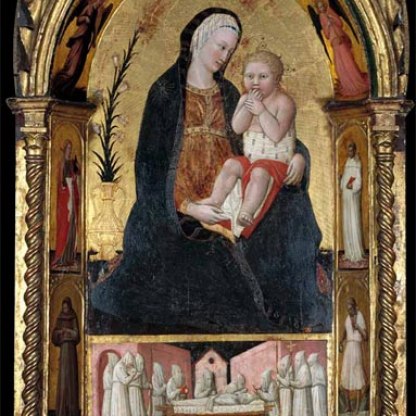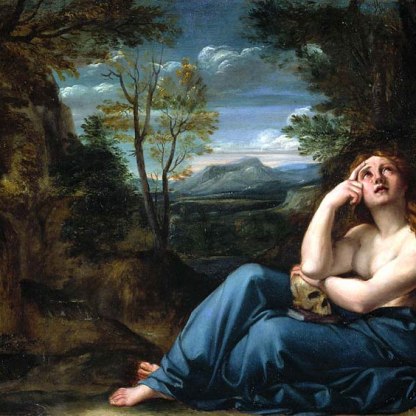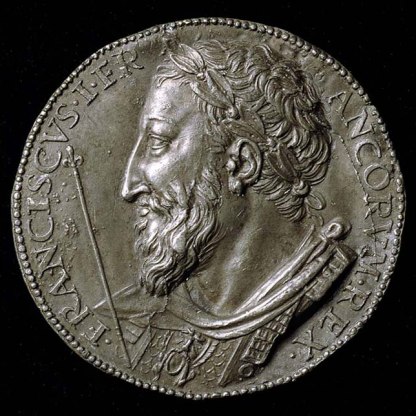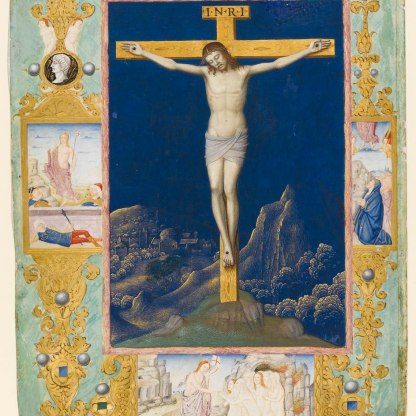Flagellant Saints
The four saints depicted on Paolo di Stefano's Tabernacle – Mary Magdalene, Francis, Jerome and Bernard of Clairvaux – would have held a special appeal to a flagellant company, connected as they are with idea of penance.
During the first half of the fifteenth century, two of the thirteen flagellant orders in Florence were dedicated to Mary Magdelene. She is named in the New Testament as a witness to the Crucifixion and the Resurrection, and later Christian writers elaborated upon her life after Christ's ascension.
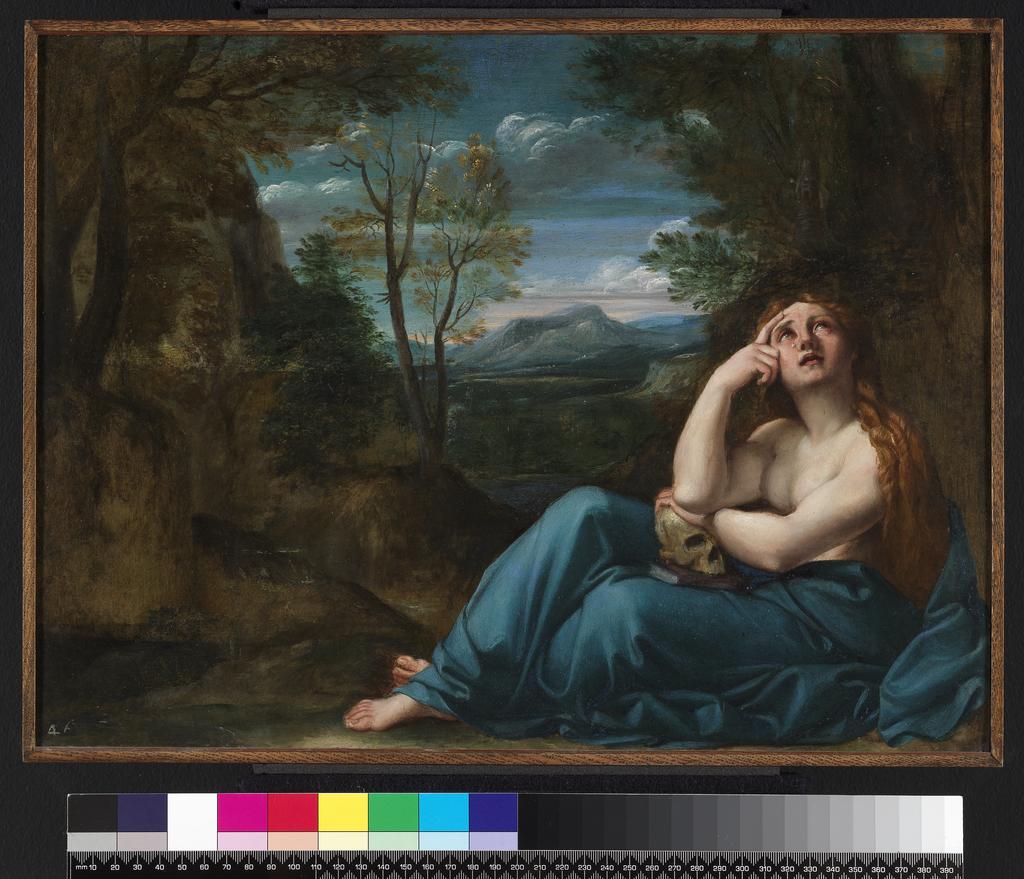
Legend had her retiring from the world to become a hermit in Provence, and the figure of the Magdelene, meditating in the wilderness, became a popular one in art: we see her thus in a late sixteenth-century painting in the Fitzwilliam, above [PD.12-1976], by the Bolognese artist Annibale Carraci. Mary was also identified with the sinful woman in the Gospels who tried to anoint Christ's feet – hence the jar of ointment she holds in Paolo Stefano's painting.
Two other Florentine flagellant companies were dedicated to St Francis of Assisi, who is shown directly below Mary here. He exposes his right side from which come rays – an allusion to the stigmata, the wounds inflicted upon Christ at the Crucifixion, which Francis miraculously suffered in 1224. We see him recieving the stigmata in a c. 1500 French Book of Hours in the Fitzwilliam [MS.131.f.356], painted in the atelier (workshop) of the celebrated court painter Jean Bourdichon.
Francis is dressed in the brown habit of the monastic order he founded, his waist girdled by a rope in which there are three knots. These represent either the Holy Trinity, or the three major vows of the Franciscan friar – poverty, obedience and chastity. As one who shared in the wounds of Christ, and as a monastic native of Tuscany, Francis was an exemplary figure for the flagellants of Florence.
St Jerome is similarly apposite. One of the four Latin 'Doctors of the Church', (along with Augustine, Gregory and Ambrose), he was a great theologian who lived the strict life of a hermit. This combination of the intellectual and the ascetic would have been particularly appealing to the flagellants. Here he exposes his breast and holds the stone with which he would smite his chest. In his letters Jerome confessed that, while meditating in the desert, he was often visited by intense sexual desires, and he would scourge himself until these had passed away.
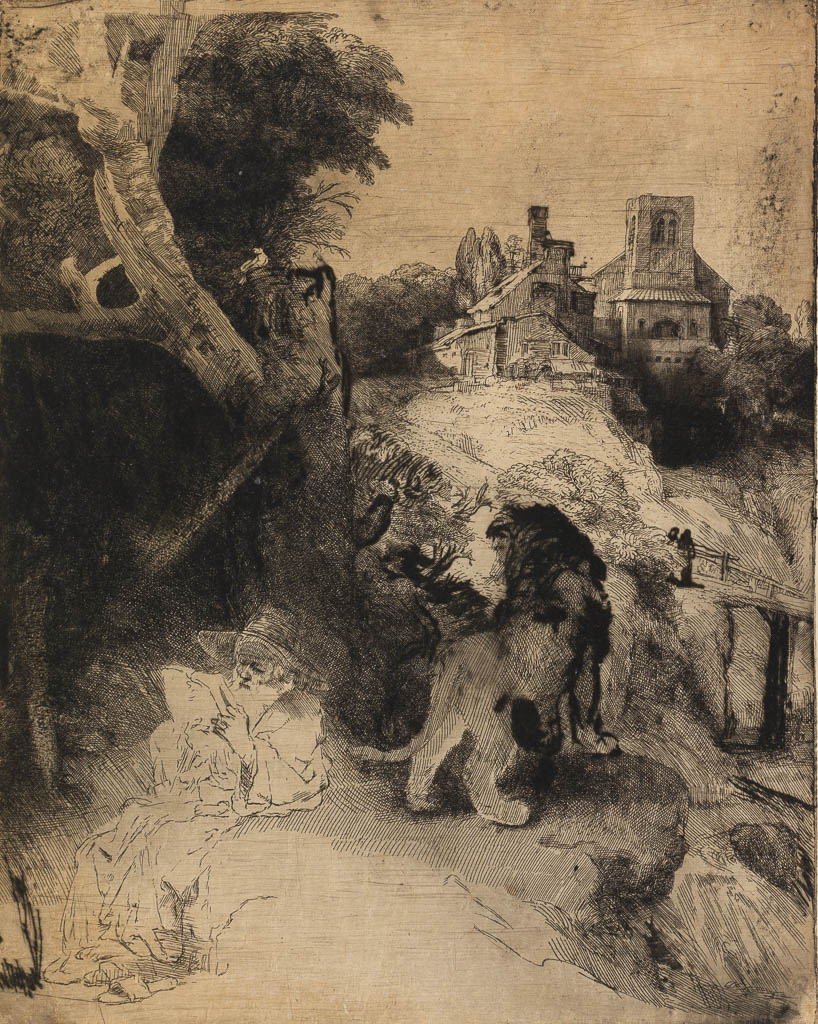
Two celebrated prints in the Fitzwilliam show this theologian saint, a popular figure in art. Left is an etching by the great seventeenth-century Dutch artist Rembrandt, St Jerome Reading in an Italian Landscape [AD.12.39-376]. Right is a master print from 1514 by the German Albrecht Dürer showing Jerome in his study [22.I.3-66]. In both prints, he is accompanied by the lion that he famously once helped by plucking a thorn from its paw. He also wears a cardinal's hat.

The saint above Jerome is probably St Bernard of Clairvaux, the founder of the Cistercian order. Like St Francis, he established a religious order known for its austerity and self-denial, and this perhaps is enough to explain his presence on the flagellant tabernacle.
Other highlight objects you might like
Other pathways and stories you might like
Sign up to our emails
Be the first to hear about our news, exhibitions, events and more…

